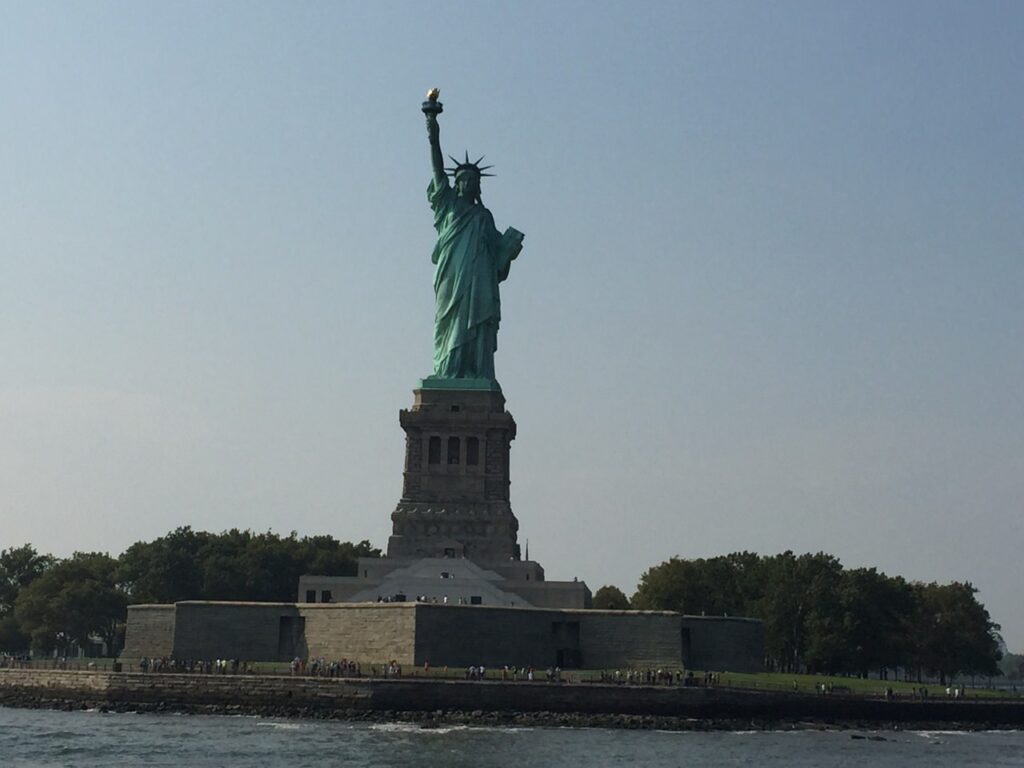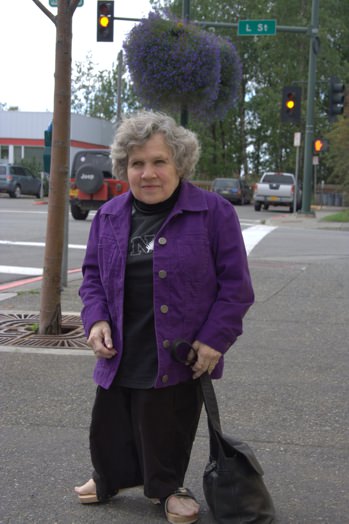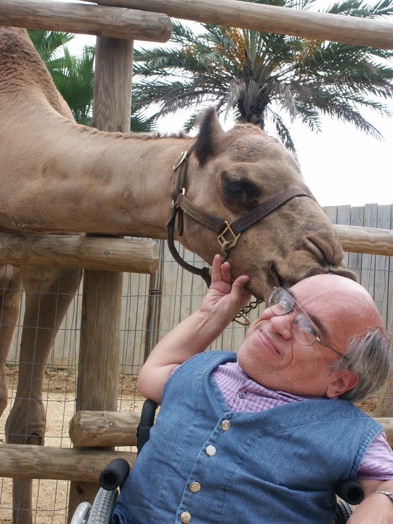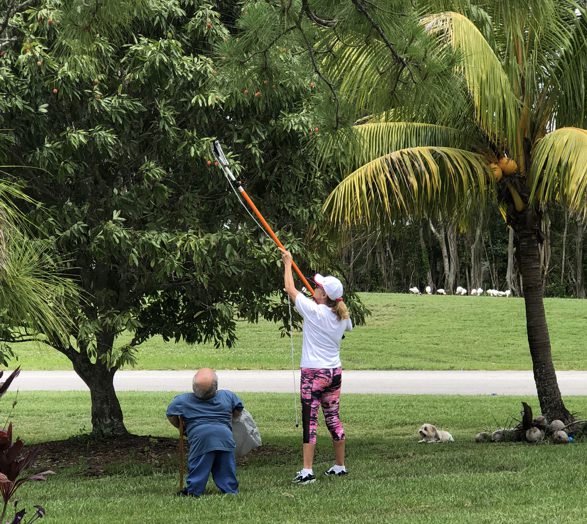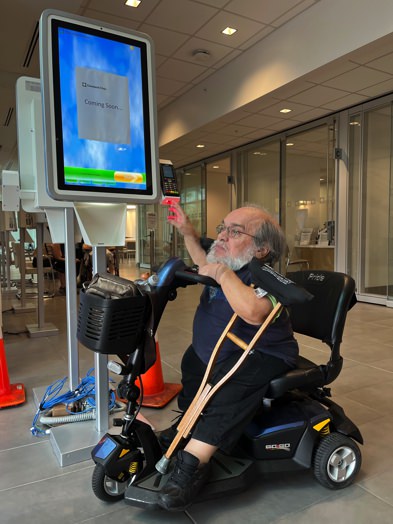
As a nod to Alaska’s State flower—the Forget-Me-Not—we remember Robert’s unforgettable 60th belated birthday celebration cruising with friends Rick and Bette from Vancouver, Canada to Whittier, Alaska. This was a definite upgrade for Robert and Bette’s tradition of celebrating their same age birthdays together.
In Glacier Bay, we all bundled up to enjoy the view and sound of glaciers calving while sipping hot chocolate on our cabin balcony.
Want to subscribe to receive blog updates sign up today!

We enjoyed our dinners in the supposedly sold out dining room with assigned seating and a personal waiter. Rick credits Robert and me scootering up at just the right moment for four seats to miraculously materialize.
Disembarking and boarding from a ten story ship was complicated by the rise and fall of the tide. Riding down the gangway on the scooter could be a gentle slope on departure and a steep incline on the return several hours later. Despite the gangway slope being reduced by attaching to higher or lower ship decks, it could still be so steep that the scooter teetered at the top! Nonetheless, several crew ensured we boarded safely.
At our first stop in Ketchikan, the cold August temperature required dressing in layers. The downside came when it was time to go to the bathroom and peel off all those layers. We spent our shore time appreciating the world’s oldest collection of native American totem poles and the Great Alaskan Lumberjack Show. Robert felt much older than 60 seated in the outdoor bleachers when staff gave him a woollen lap blanket akin to those used in nursing homes.
In Juneau—Alaska’s capital city—our local tour guide was a relative of Robert’s brother-in-law. He had great insights on how to survive in Alaska. The tip that sticks with me is “cotton kills, wool warms.” In bringing us to the Mendenhall Glacier he lamented how global warming was shrinking the glacier. Indeed glaciologist, Mike Hekkers, reported that for 20 years the glacier has retreated over 160 feet per year.
In Skagway we tackled an incline that rivaled the ship’s gangway. After boarding the White Pass & Yukon Route Railway, the train climbed grades of up to 3.9 percent to ascend 2,865 feet in only 20 miles. Completed in 1900, the railroad was built in treacherous conditions during the Klondike Gold Rush to link the Yukon and other booming gold-mining districts with tidewater at Skagway.
This narrow gauge railroad is an International Historic Civil Engineering landmark comparable to the Eiffel tower, Statue of Liberty and Panama Canal. Just as significant to us was the carriage equipped with a wheelchair lift and, for our amusement, “handicapped eating” presumably intended as “disabled seating” since there was no food service.

Our cruise ended in Whittier. Robert’s cousin Carol not only met us at the terminal, but also for the first time. Carol and her two dogs graciously welcomed us as a guest in their home in Anchorage and played tour guide for a few days.
How about you? Any unforgettable birthdays or destinations?
You may also want to read:
- “Access Hits and Misses in New York City.” Angela Muir Van Etten blog. August 30, 2021. https://angelamuirvanetten.com/access-hits-and-misses-in-new-york-city/
- Angela Muir Van Etten weekly blog posts at https://angelamuirvanetten.com/blog/
- Angela Muir Van Etten dwarfism memoir trilogy. https://angelamuirvanetten.com/books/

